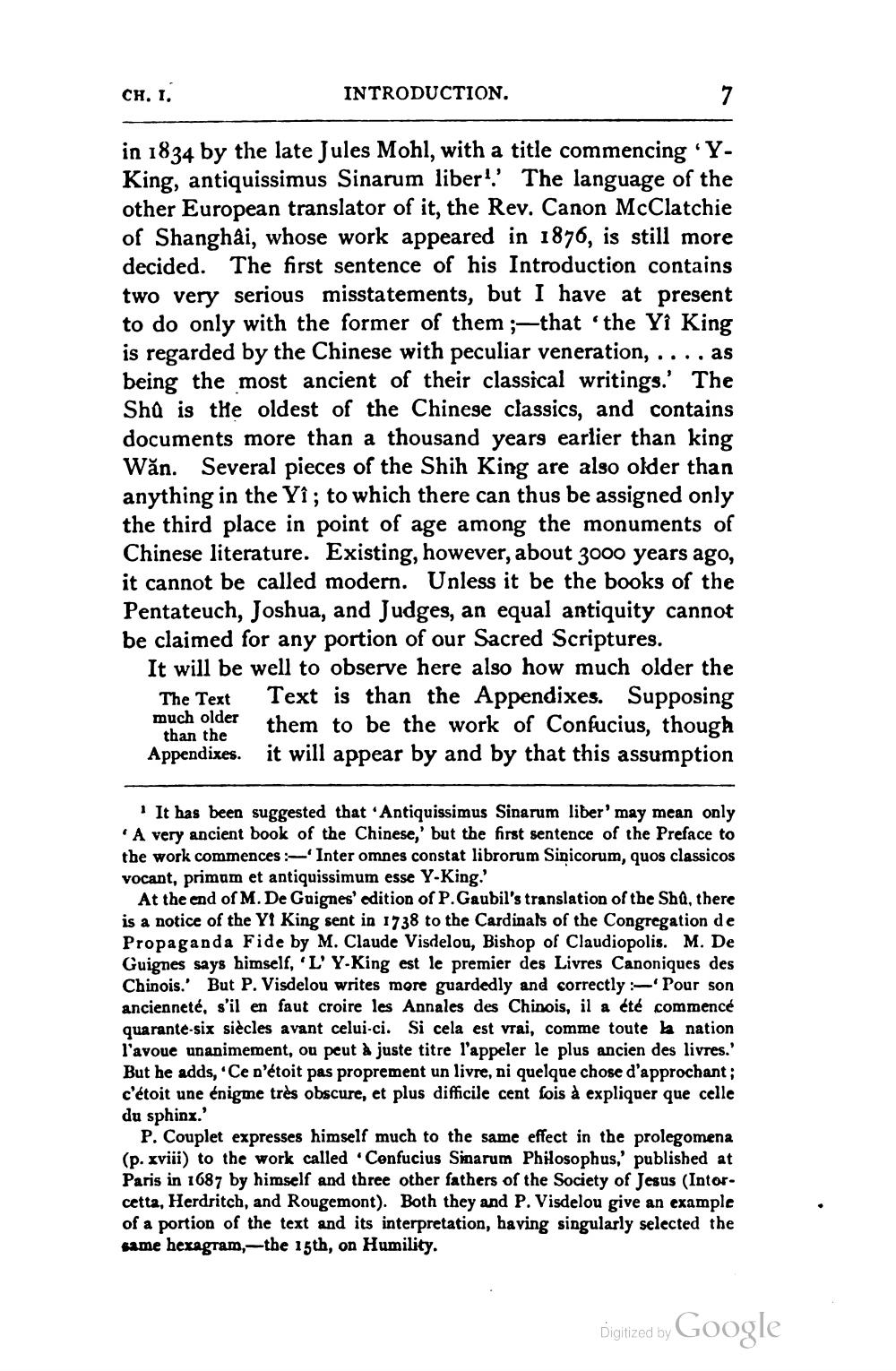________________
CH. 1.
INTRODUCTION.
in 1834 by the late Jules Mohl, with a title commencing "YKing, antiquissimus Sinarum liber!' The language of the other European translator of it, the Rev. Canon McClatchie of Shanghai, whose work appeared in 1876, is still more decided. The first sentence of his Introduction contains two very serious misstatements, but I have at present to do only with the former of them ;—that 'the Yi King is regarded by the Chinese with peculiar veneration, .... as being the most ancient of their classical writings.' The Shù is the oldest of the Chinese classics, and contains documents more than a thousand years earlier than king Wăn. Several pieces of the Shih King are also older than anything in the Yi; to which there can thus be assigned only the third place in point of age among the monuments of Chinese literature. Existing, however, about 3000 years ago, it cannot be called modern. Unless it be the books of the Pentateuch, Joshua, and Judges, an equal antiquity cannot be claimed for any portion of our Sacred Scriptures.
It will be well to observe here also how much older the
The Text Text is than the Appendixes. Supposing much older them to be the work of Confucius, though
than the Appendixes. it will appear by and by that this assumption
* It has been suggested that 'Antiquissimus Sinarum liber' may mean only A very ancient book of the Chinese,' but the first sentence of the Preface to the work commences - Inter omnes constat librorum Sinicorum, quos classicos vocant, primum et antiquissimum esse Y-King.'
At the end of M. De Guignes' edition of P. Gaubil's translation of the ShQ, there is a notice of the YI King sent in 1738 to the Cardinals of the Congregation de Propaganda Fide by M. Claude Visdelou, Bishop of Claudiopolis. M. De Guignes says himself, 'L' Y-King est le premier des Livres Canoniques des Chinois.' But P. Visdelou writes more guardedly and correctly - Pour son ancienneté, s'il en faut croire les Annales des Chinois, il a été commencé quarante-six siècles avant celui-ci. Si cela est vrai, comme toute la nation l'avoue unanimement, on peut à juste titre l'appeler le plus ancien des livres.' But he adds, 'Ce n'étoit pas proprement un livre, ni quelque chose d'approchant; c'étoit une énigme très obscure, et plus difficile cent fois à expliquer que celle du sphinx.'
P. Couplet expresses himself much to the same effect in the prolegomena (p. xviii) to the work called 'Confucius Simarum Philosophus,' published at Paris in 1687 by himself and three other fathers of the Society of Jesus (Intorcetta, Herdritch, and Rougemont). Both they and P. Visdelou give an example of a portion of the text and its interpretation, having singularly selected the same hexagram,—the 15th, on Humility.
Digitized by Google




